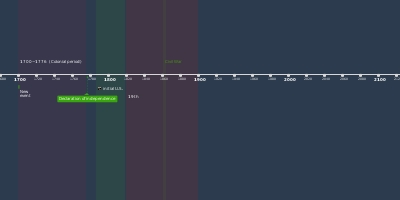Finance - Money and Banking (1 ene 1906 año – 15 agos 1945 año)
Descripción:
- A major economic downturn in 1906 ended the expansion from the late 1890s. This was followed by the Panic of 1907. The Panic of 1907 was a factor in the establishment of the Federal Reserve Bank in 1913.- The mild inflation of the 1890s, attributed to the rising gold supply from mining, continued until World War I, at which time inflation rose sharply with wartime shortages including labor shortages. Following the war the rate of inflation fell, but prices remained above the prewar level.
The U.S. economy prospered during World War I, partly due to sales of war goods to Europe. The stock market had its best year in history in 1916. The U.S. gold reserves doubled between 1913 and 1918, causing the price level to rise. Interest rates had been held low to minimize interest on war bonds, but after the final war bonds were sold in 1919, the Federal Reserve raised the discount rate from 4% to 6%. Interest rates rose and the money supply contracted. The economy entered the Depression of 1920-21, which was a sharp decline financially. By 1923, the economy had returned to full employment.
A debt-fueled boom developed following the war. Jerome (1934) gives an unattributed quote about finance conditions that allowed the great industrial expansion of the post World War I period:
Probably never before in this country had such a volume of funds been available at such low rates for such a long period.
- There was also a real estate and housing bubble in the 1920s, especially in Florida, which burst in 1925. Alvin Hansen stated that housing construction during the 1920s decade exceeded population growth by 25%. See also:Florida land boom of the 1920s
Debt reached unsustainable levels. Speculation in stocks drove prices up to unprecedented valuation levels. The stock market crashed in late October 1929.
Añadido al timeline:
fecha:
1 ene 1906 año
15 agos 1945 año
~ 39 years
